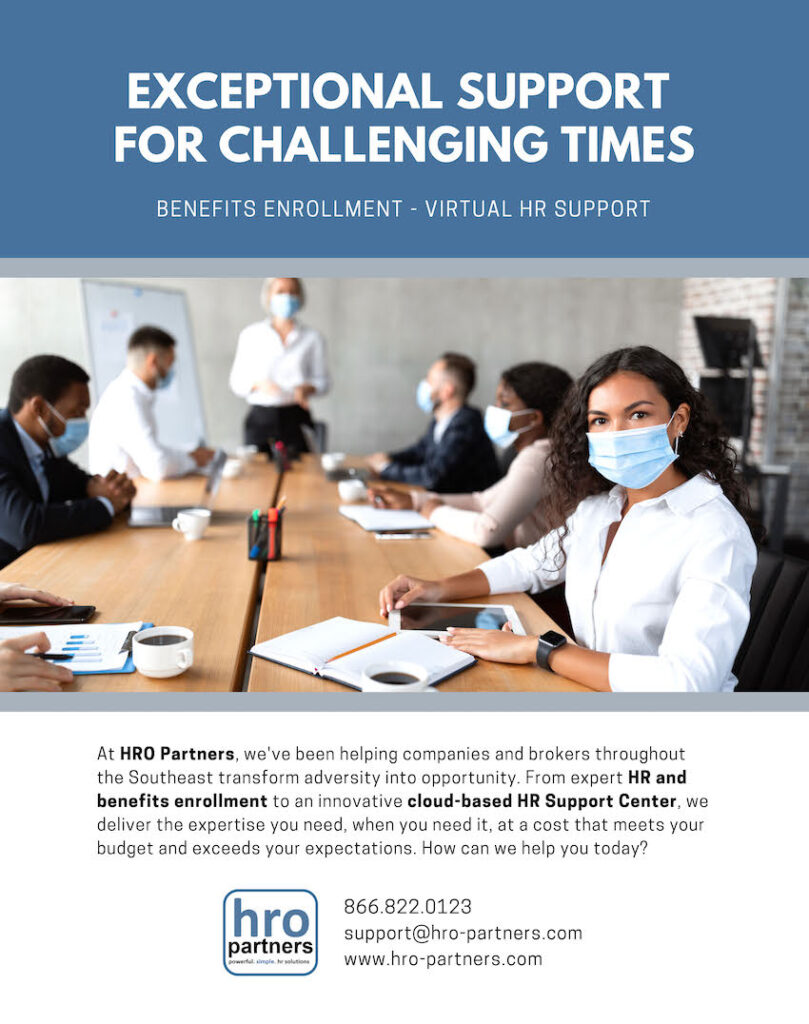By Alexis York
In our November webinar, we discussed “Battling the Great Resignation: Tips for Re-Imagining Your Compensation and Benefits Strategies”.
It’s a surprise to no one that since March of 2020, companies have seen more than 100% employee turnover, without much of an improvement here in 2021. Over 4 million people have quit their jobs, and over 40% of workers are actively searching for a new one, making it twice the rate of 2019.
Why are People Leaving?
It’s important to first recognize who’s thinking of leaving, and why. Technology, Administrative, Operations, Health Care and Professional and Business Services top the list of Professions resigning. Reasons include better compensation, better work/life balance, better benefits, career advancement, and burnout.
Employers are also starting to see a surge in people leaving- from what is called “COVID Clarity” – an idea that the pandemic showed workers a clearer view of their priorities and what was truly important.
Research has shown an increase in burnout and disengagement after 18 months of remote work. 55% of workers said colleagues have quit voluntarily within the past 6 months, which then caused a domino effect with 28% reported feeling isolated and less loyal to their employer after said colleagues left.
So the question is, how can you keep your employees engaged and feeling valuable? Simple – benefits. Recent research showed that 30% of employees would quit their jobs tomorrow if not for health insurance.
According to more in-depth employee surveys, these are what employees want when it comes to benefits:
- Health insurance
- Parental leave
- Retirement plans
- Life insurance
- Telecommuting/remote work
Diversify Your Leave Polices
Employees are working harder and longer hours then ever before- partly because of the pandemic so leave policies are a hot topic amongst workers.
Consider expanding your leave polices beyond standard 10-day PTO. Leave that employees have specifically requested is as follows:
- Family care/ Parental leave
- Adoption/ fertility leave
- Unlimited PTO
- Mental health days
- Incentivized PTO
- COVID sick leave
When strategizing your benefit plans: try diversifying health insurance offerings making them more accessible, reviewing current parental leave policies and updating, refresh your financial council programs, amplify insurance offerings, and create practical long term tele-work solutions.
What Do Employees Want?
- Return to work flexibility
- Unlimited PTO
- Better compensation
- Additional benefits
- On-the-job training
- Financial relief
- Hiring bonuses
- Diverse benefits
- Childcare
- Retention bonuses
- Increased safety and security
Refresh Financial Wellness Programs
25% of workers face financial problems severe enough to impact job productivity. Severe financial stress on employees can lead to loss of productivity, absenteeism, tardiness, garnishments, accidents, disability claims, increased health care costs, etc.
Try building a financial wellness strategy. Understand your employees’ financial lives, assess your employees’ financial wellness needs, determine the right financial wellness solutions for your company, find and commit to your financial wellness program, implement and evaluate your solution, and modify your solution based on evaluation and feedback.
Create Telework Solutions
As mentioned above, remote work has been shown to cause burnout over the course of the last year and a half.
However, other research shows that when given a choice, remote and hybrid work proved to be surprisingly productive and led to:
- More creative thinking
- Increase in comradery with team members
- Training, teaching and coaching others
- Spent more time learning and training how to better do their job
- Gallup survey found some employees would take a pay cut in order to keep working remote
- More cost effective as office spaces are becoming virtual, no office cost
Companies should look into offering a choice for employees and then start making the appropriate changes. Consider updating remote work policies from “temporary” COVID policies to more concrete ones, determine a hybrid or fully remote environment, clarify remote workers job duties, and communicate work schedules and adhere to FLSA.
Communicate Your Offerings
Benefit offerings are only effective when they are understood by the employer. Often, employees can get so overwhelmed with benefit paperwork that they do not take the time to read and understand what benefits they even have.
Set your employees up for success by having manager/team meetings to ensure understanding of benefit offerings and enrollment processes.
Also, take a look at your communication strategies and update them using technology. Text message communication, QR codes for scheduling enrollments and interactive digital post cards are all very effective ways to communicate your benefits!
Time to Re-Imagine Compensation
After you analyze strategies to improve benefit offerings, compensation is the next hot button topic keeping HR professionals and workers alike up at night.
Over the past 2 years, compensation has increased across all industries.
More specifically:
- Food services (up 4.1%)
- Transportation (up 4%)
- Retail (up 3%).
To stay competitive, refresh your comp surveys with local research to keep up with recent changes. Keep your job descriptions up to date to reflect ever-changing requirements and reimagined work arrangements
Take Note of Employee Referral Trends
Companies have seen a large increase in sign-on bonuses, employee referrals and other one-time pay structures to recruit new hires. In the past 6 months, 32% of HR leaders have implemented referral bonuses while 28% have introduced additional merit increases to retain employees.
When you are loyal to employees, they remember that. It is important to refresh Employee Referral Programs and focus on employee feedback and review. Employee affinity groups are also a great way to encourage referral engagement!
Following the strategies above can help your organization battle The Great Resignation, recruit new talent, and avoid employee burnout in the future!

HRO-Partners
ayork@hro-partners.com
www.hro-partners.com
